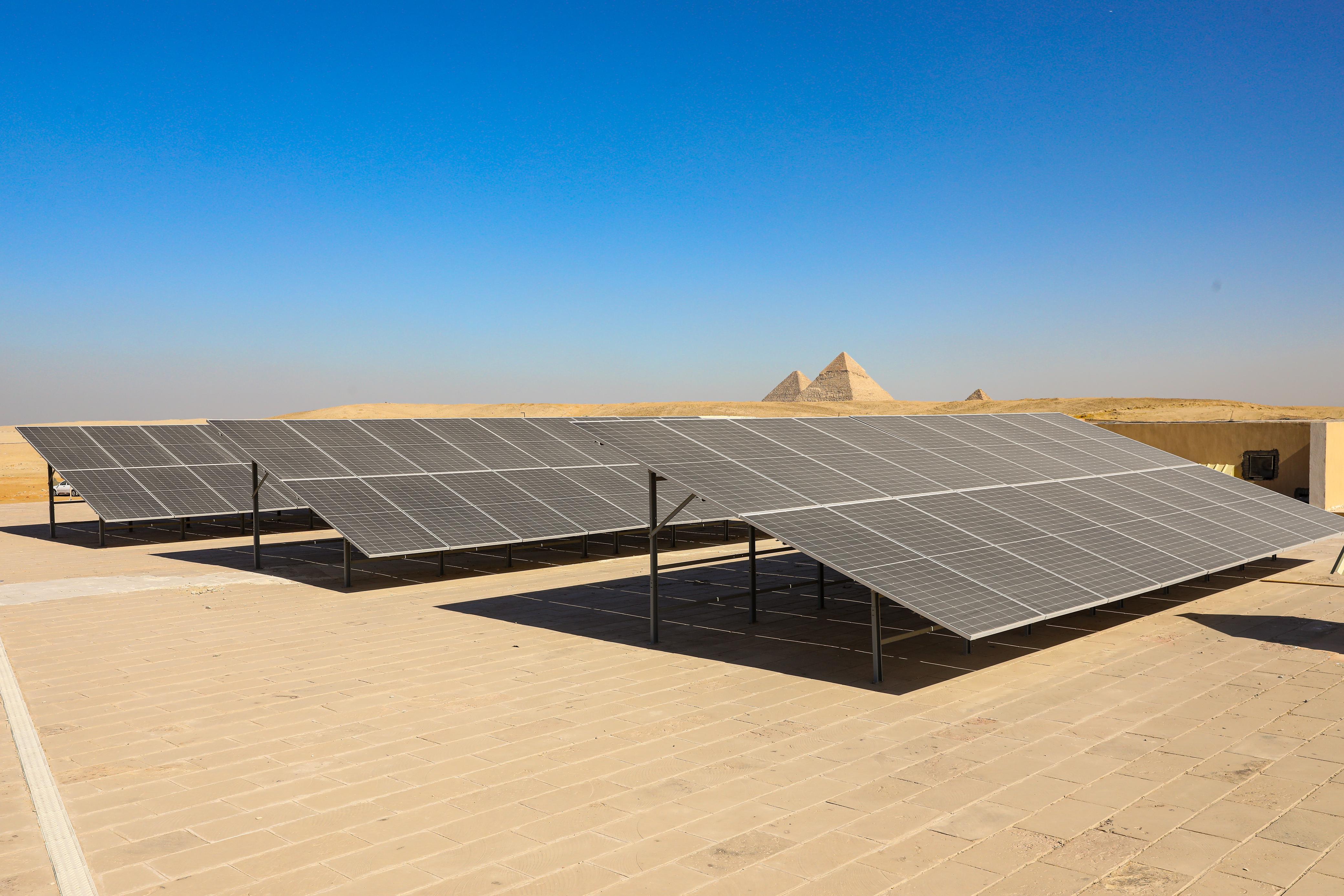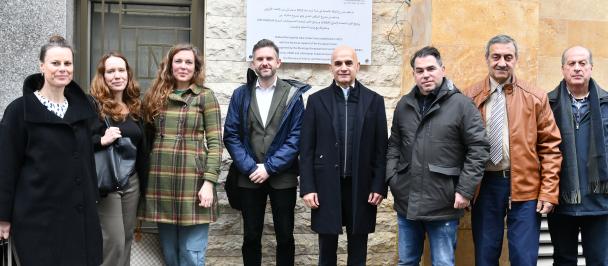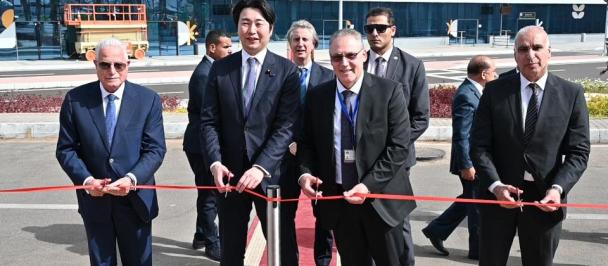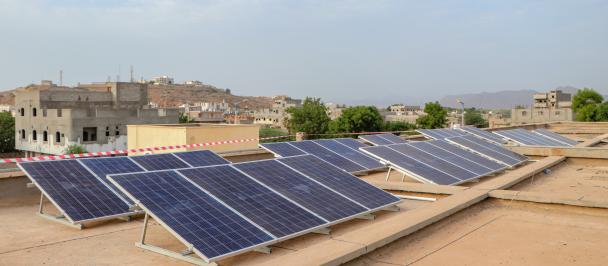Ministry of Tourism and Antiquities represented by the SCA, the IMC and UNDP Egypt inaugurate solar power stations at world heritage sites and museums
January 18, 2024

Cairo, Egypt – In an official ceremony at the Manial Palace, the Ministry of Tourism and Antiquities represented by the Supreme Council for Antiquities (SCA), the Industrial Modernization Center, and the United Nations Development Programme (UNDP) in Egypt, inaugurated today solar power stations at five Egyptian world heritage sites and museums. This achievement, realized under the Egypt PV project, signifies a crucial step towards sustainable energy practices and environmental conservation.
The five solar power stations, strategically located at the Giza Plateau’s Visitor Center, Manial Palace in Cairo, Sharm El Sheikh Museum, and two Museums in Alexandria (The National and the Royal Jewelry Museums) boast a total capacity of 325 kW of photovoltaic systems generating 520 MW.hr/year. This is estimated to reduce approximately 295 tons/year of carbon dioxide equivalent of greenhouse gas emissions annually.
The solar power stations mark the completion of the Egypt PV flagship project, a pioneering initiative that opened the market for rooftop small-scale PV systems in Egypt. Supported by the Global Environment Facility (GEF) and later funded by the European Union through the UNDP project with COP27 Presidency, the project engaged a diverse range of government and private sector stakeholders.
During the ceremony, Ms. Ghada Shalaby, Vice Minister for Tourism Affairs stated, “The Ministry of Tourism and Antiquities is committed to ensuring sustainable growth while safeguarding our precious monuments for future generations. We recognize the increasing global demand for responsible tourism and have actively collaborated with our stakeholders and partners such as the UNDP and UNWTO. Through these partnerships, we have worked to expand sustainable technologies and foster connections between the government and the private sector in the tourism industry.”
“Preserving and protecting our heritage sites is of utmost importance to us. These sites are not only iconic symbols of Egypt's history but also serve as economic engines that generate significant revenue and employment opportunities. By implementing sustainable practices in these sites, we not only ensure their long-term survival but also guarantee a sustainable tourism industry that benefits both the local communities and visitors”, she added.
Dr. Mostafa Waziri, Secretary-General of the SCA, said that the implementation of solar power plants is part of a plan to further integrate solar energy across all Egyptian world heritage sites and museums. The implementation of solar power stations marks a strategic step towards fostering sustainability and green energy practices within Egypt's rich cultural heritage. This falls within the framework of the Ministry of Tourism and Antiquities' strategy, represented by the Supreme Council for Antiquities, to transform museums and archaeological sites into green locations relying on sustainable solar energy as an economically viable alternative to electricity. This aims to achieve Egypt's Sustainable Development Strategy for 2030.
Mr. Moamen Osman, Head of the Museums Sector at the SCA, highlighted the council's efforts and commitment to ensuring the sustainability of archaeological sites and museums under its jurisdiction through the installation of small-scale solar power stations at cultural heritage sites and museums. He highlighted that the list of targeted sites for solar energy implementation is divided into two phases, with the first phase including approximately 20 museums and archaeological sites, and the second phase comprising around 6 museums and sites.
Ms. Doaa Selima, Executive Director of the Industrial Modernization Center, emphasized the center's pivotal role in supporting the implementation of the newly inaugurated solar power stations, “Leveraging technical expertise gained through collaborative efforts with the Egypt PV project and UNDP funded by Global Environment Facility (GEF), the Center extends its consultancy services to the industrial sector, facilitating the establishment of rooftop solar power stations as a sustainable energy solutions."
From his side, UNDP Egypt Resident Representative Alessandro Fracassetti said, "With the successful inauguration of solar power stations at Egypt's world heritage sites, we mark a pivotal milestone in the Egypt PV flagship project, funded by the Global Environment Facility. This groundbreaking initiative not only opened markets for small-scale rooftop PV systems but paved the way for a sustainable future. I hope the transformative impact of this project inspires the replication of these efforts, providing green electricity to all historical sites in Egypt and showcasing the potentials of partnerships and innovation in achieving renewable energy goals.”
Egypt PV is a critical component of UNDP's overall contribution to Egypt's energy transition and aligns with Sustainable Development Goals 7 and 13, as well as Egypt's Vision 2023. The project focused on promoting small-scale renewable energy systems and energy-efficient appliances to achieve national NDC targets and renewable energy goals.
Explore the transformative potential of partnerships and innovations to achieve renewable energy goals here.
For media inquiries, please contact:
UNDP: Noran Said, Communication Coordinator at noran.said@undp.org

 Locations
Locations


